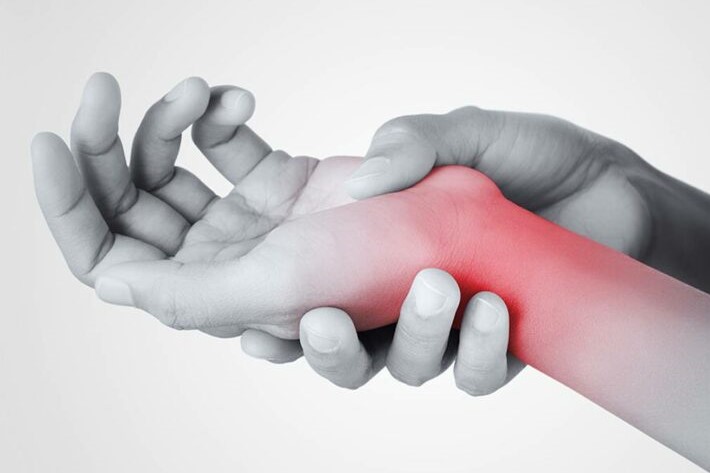
Symptomatology and therapy for carpal tunnel syndrome
Carpal tunnel syndrome is a pathology characterised by compression suffering of the median nerve as it passes through the carpal canal
The condition is present especially in females (with a ratio of 6 to 1 compared to males) and most often affects the dominant side, while it is bilateral in more than 1/3 of cases.
In pregnancy it often takes on a peculiar appearance, as it tends to appear around the third month of pregnancy and then recede around the 6th-7th months.
It often returns later or in other pregnancies and requires definitive intervention.
What causes carpal tunnel syndrome
In most cases, the syndrome is idiopathic, i.e. without a certain trigger.
It usually occurs when the structures contained in the carpal canal increase in volume (usually due to inflammatory processes or tissue imbibition) or when the carpal canal decreases in volume (trauma, fractures, rheumatic processes).
Symptoms and diagnosis of carpal tunnel
The syndrome is recognised to be familiar and may be associated with Dupuytren’s disease.
We distinguish a subjective and an objective symptomatology:
- Subjective: paresthesias (tingling), painful radiations, vasomotor disturbances.
- Objective: hypotonotrophy, thumb opposition deficits, skin dystrophies, nail bed dystrophies (the latter are conditions one should never get to as they are difficult to ‘return’ to previous conditions).
The diagnosis, in addition to the clinic, involves performing an electromyography (EMG), i.e. a study of the median nerve conduction velocity.
What is the therapy
Therapy is surgical.
The operation consists of sectioning the transverse ligament of the carpus, which is anatomically the ‘roof’ of the carpal tunnel.
This operation, which ensures a high success rate, can be performed using the classic technique or endoscopically, i.e. with the aid of fibre optics.
There is no difference in results between the two techniques.
It is usually the surgeon, depending on his experience and the morphology of the carpus, who prefers one or the other technique.
In the post-operative period, the patient must observe a rest period of approximately 6-7 days.
The hand is not immobilised.
Read Also:
Emergency Live Even More…Live: Download The New Free App Of Your Newspaper For IOS And Android
Fracture Of The Wrist: How To Recognise And Treat It
Fibromyalgia: The Importance Of A Diagnosis
Electromyography (EMG), What It Assesses And When It Is Done
Carpal Tunnel Syndrome: Diagnosis And Treatment
Hand And Wrist Sprains And Fractures: The Most Common Causes And What To Do
Wrist Fracture: Plaster Cast Or Surgery?
Wrist And Hand Cysts: What To Know And How To Treat Them


